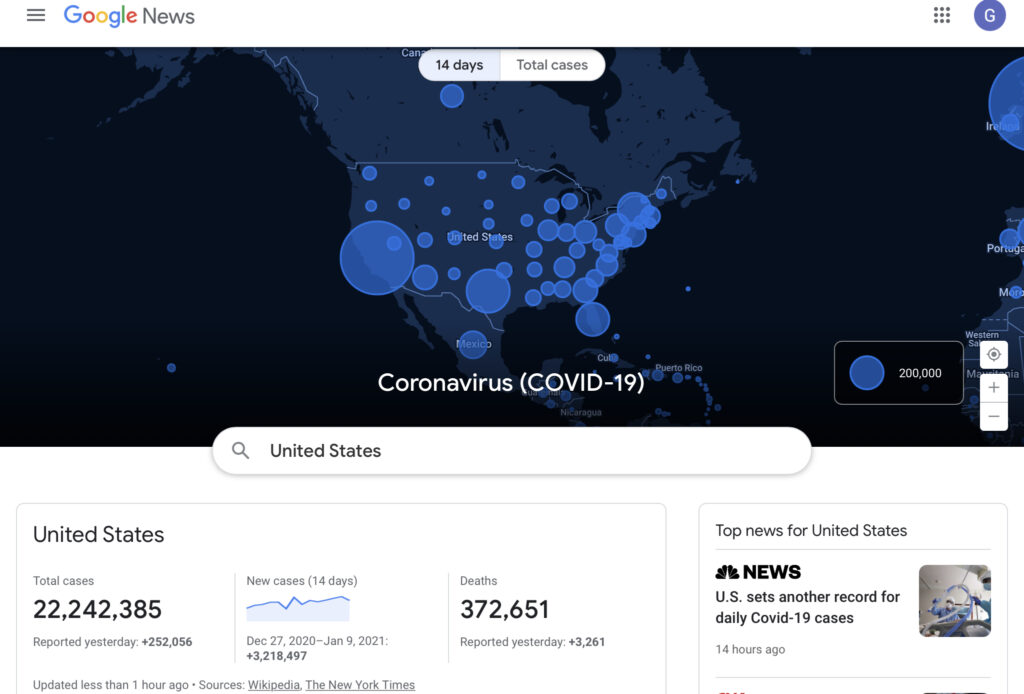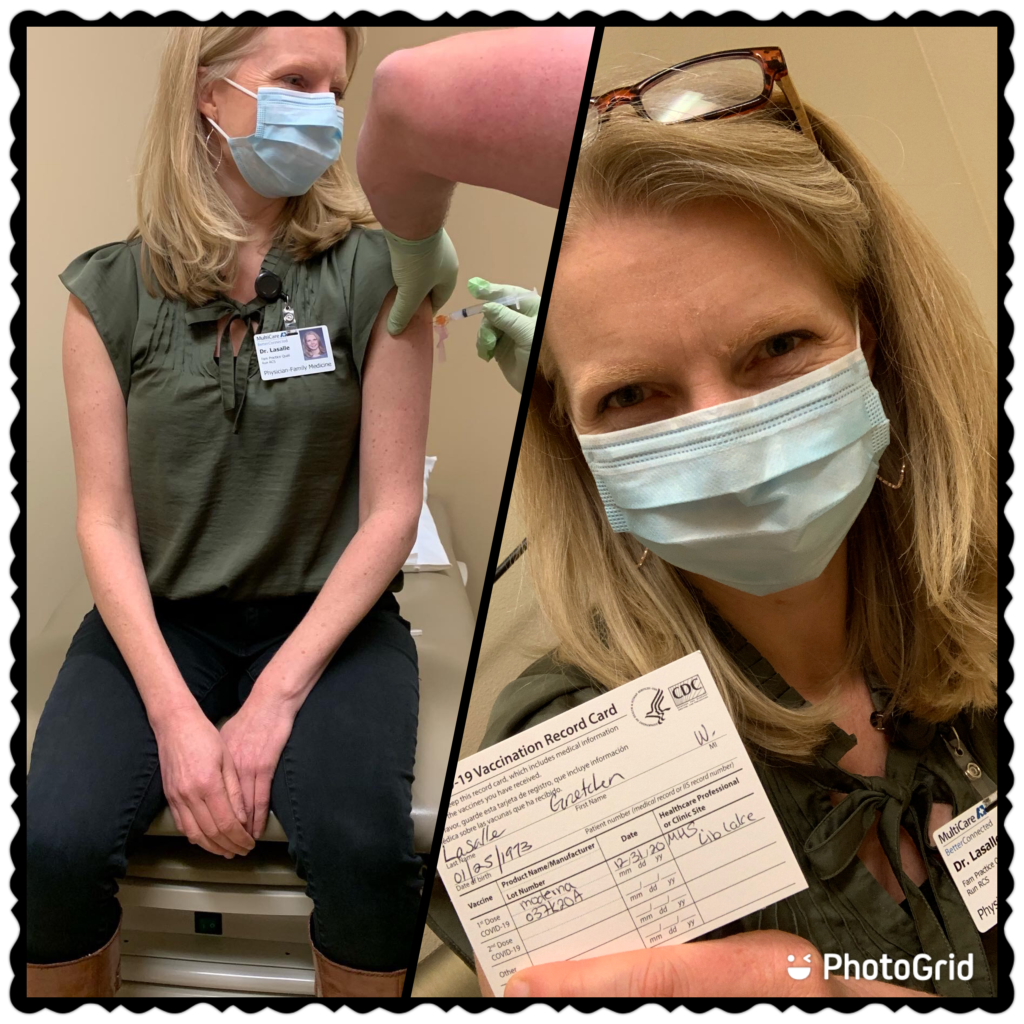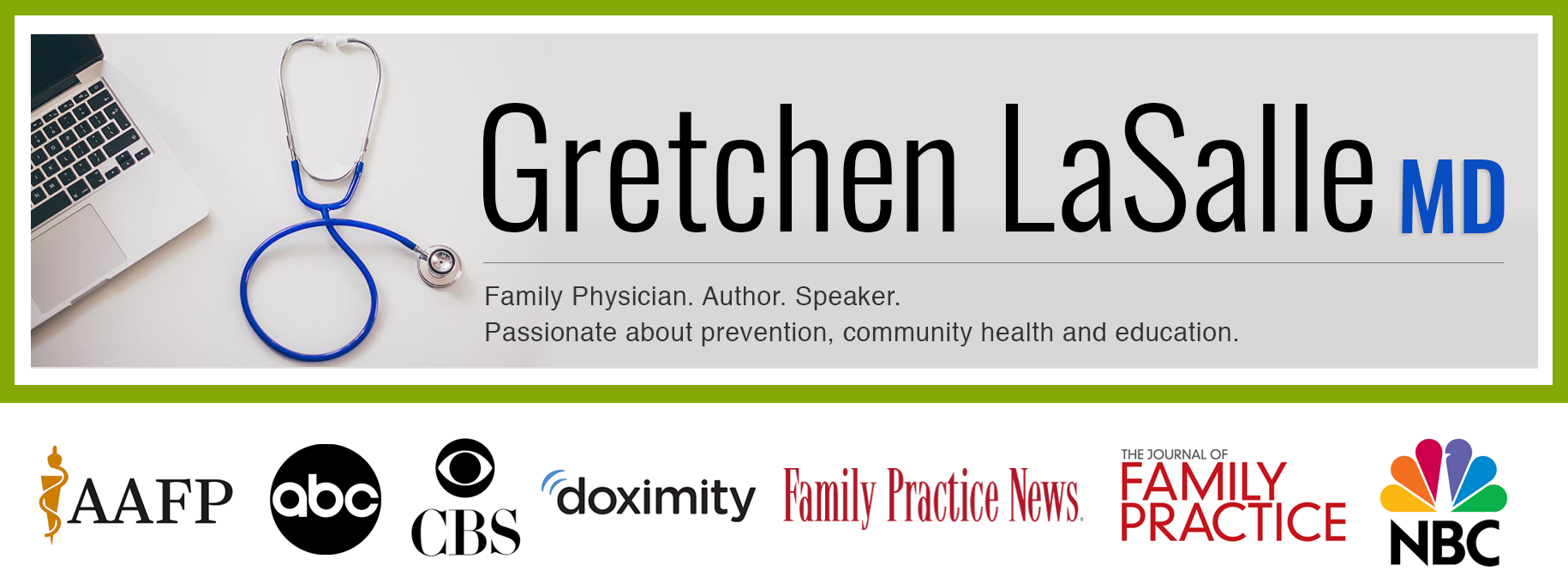Today we are talking COVID19, vaccines, and risk. We have now administered the Pfizer or Moderna vaccines to more than 6 million people across the U.S. It’s a start, but this number is significantly lower than we would have hoped. There are likely several reasons for this slow roll-out.
There has been little central leadership on the roll-out process – each state, each county, each hospital system being left to its own devices to figure out a plan. Additionally, our vaccine roll-out began during major holidays, when people were on vacation. The first vaccine off the presses was Pfizer, which requires ultra-cold storage and has a relatively limited window of viability once thawed; a fact which makes administration more difficult. And people who are currently eligible to receive the vaccine (people working in healthcare facilities and patients and staff of long term care facilities) are sometimes declining this life-saving intervention. This last reality is the most bothersome of all.
We don’t have a foolproof playbook for how to get vaccine into the arms of over 328 million people, but we are learning as we go. And the pace of vaccination is picking up. We have the Moderna vaccine out now as well and this requires storage more typical of other vaccines. We will also likely have other vaccines gaining authorization in the coming months (AstraZeneca, Johnson & Johnson and Novavax have vaccines that are in various stages of Phase 3 trials). This will increase our ability to vaccinate a larger swath of the population. But how do we get people who have concerns about these vaccines to come around to a level of confidence in vaccinating?
A deadly state of affairs

Total cases and deaths from COVID19 as of 1/10/21. Photo from Google news.
We are nearing a terrible milestone of nearly 400,000 dead from COVID19. We have surpassed the mark where now more than 1 in every 1000 people in the U.S. has died from this terrible virus. We will only get the Pandemic under control if we get enough people vaccinated and vaccinated quickly.
What we should fear is COVID, not the vaccine
Fear is a powerful motivator. We make emotional, fear-based decisions much more rapidly than we do decisions based on data and statistics. This is why the anti-vax movement has such success. They play on the fears of parents and others. Yet we, the pro-vax side, have so many more stories of loss and grief that we just don’t make use of. When it comes to weighing the decision to get a COVID vaccine, we have to help people focus on reality. And the reality is that COVID19 is deadly. Thanks to mutations in the virus, it is also beginning to spread much more rapidly. And our hospitals across the country are in crisis.
In LA county, paramedics are being told to not transport people to the hospital if they can’t resuscitate them in the field. Get into a car accident with life-threatening injuries? You may be out of luck. Have a heart attack that requires rapid transport to the cath lab to save your life? You just might not make it. Ambulances are waiting to get people into hospitals for hours, sometimes days. The reality of risk is important and we are seeing that reality play out in our hospitals on a daily basis. This is why it baffles me that the theoretical and rare risk of some adverse reaction to the COVID vaccine is more frightening to people than being on a ventilator and dying. Maybe we’ve become numb to the images of what we see on TV every night. Maybe it is the unknown, the unseen that frightens us more.
Don’t let fear keep you from protecting yourself and others

Fear can be paralyzing. But we can’t let fear keep us from taking the safer action. Photo adapted from Pixabay.
But acting out of fear, and choosing NOT to get a COVID vaccine when one is available, is the much riskier prospect. There is risk inherent in EVERYTHING that we do. Driving a car is much riskier (as far as chance of severe injury or death) than getting a vaccine. We take our life in our hands every time we eat – we could choke, we could have a life-threatening allergic reaction, we could be killing ourselves slowly with chemicals and sugar and salt. Falling in love is risky. We could, and more often than not do, get our hearts broken. Yet we still take that risk.
We know that the COVID illness brings with it a range of symptoms and outcomes; from asymptomatic infection to high fevers, severe body and joint aches, respiratory failure, blood clots, strokes, brain inflammation, organ failure, heart damage, and more. We also know that the COVID vaccine has its own potential side effects; from nothing more than a sore arm to a typically low grade fever, body aches, chills, nausea, headaches and more – sometimes enough to keep a person out of work for a day or two. And maybe a bit more common on the second dose than the first. But, PEOPLE. This is discomfort for a day or two. It is not weeks in the ICU hooked up to a ventilator. It is not death.
Let’s look at the reality of risk
Preferring to take your chances with COVID, rather than take a tested and safe and effective vaccine, is like playing Russian roulette. Will you be that person who doesn’t make it? Will you die alone with only the hand of a nurse or doctor that you don’t know as your last human contact? Will you say goodbye to your loved ones across a computer screen? Will your family be saddled with tens of thousands of dollars in debt because of hospital bills?
Will you be among that growing number that, even though they survive the illness (and this happens even with only mildly symptomatic people as well), suffer from COVID long-hauler’s syndrome? Will you suffer chronic fatigue, muscle and joint pain, the inability to think clearly, difficulty with minimal exertion because of toxic viral effects on your heart and lungs lasting months after your initial illness? Will you expose your family to risks as yet not fully understood? Even our young, healthy athletes are showing damage to and inflammation of the heart following COVID infection – a fact which puts them at risk of sudden death when they return to play. Those things are WAY more likely than you having any serious/deadly reaction to a vaccine.
But what about severe allergic reactions to the vaccines?
We’ve all heard about the “allergy” concerns with the mRNA vaccines. And that sounds scary. Click here for the CDC’s most recent updates regarding allergies and COVID vaccines. But, we have administered over 6 million doses of vaccine in the U.S. thus far with the VAST majority doing just fine. While certainly needing more monitoring as vaccination rates climb, there have been a total of 29 severe allergic (anaphylactic) reactions to the vaccines. Let’s look at what this means – in reality.
This means that approximately 5.5 out of every 1 million people receiving this vaccine have had an anaphylactic reaction. And NONE of these people died. I repeat. NONE of these people died. Anaphylaxis happens fast (those who had this reaction after the COVID vaccine saw symptoms within 15 minutes). It is easily recognizable and treatable. And all vaccination administration centers are set up to handle this rare but possible reaction.

Visual of the reality of risk from COVID vs risk from the vaccine. Adapted from Pixabay.
So, which is riskier? 1 out of 1000 DEATHS from COVID19 or 5.5 out of 1 million (approximately 1 out of 181,000) TREATABLE and SURVIVABLE severe allergic reactions following immunization.
Long-term bad outcomes from vaccines? The likelihood is low.
And as for any as yet unknown potential long-term adverse outcome from COVID vaccination, only time will tell. But knowing what we know about all other vaccines that we have had access to for centuries (our first vaccine was developed in 1796), there really are no adverse outcomes from vaccines that show up years later. Any significant adverse reaction to vaccines typically makes itself known in the first 6 weeks following immunization. And we have now had more than 8-12 weeks of data on our trial participants showing no definitively related serious adverse outcomes.
I don’t want to make light of the possibility of adverse reactions, however. As we’ve discussed previously, vaccines given to 70,000 people in the setting of a trial may not bring to light those very rare reactions that we might see when the vaccines are administered to millions of people.
Post-authorization safety monitoring is key!

CDC’s V-SAFE logo. Photo credit Centers for Disease Control and Prevention.
This is why it is SO important that those of us getting the COVID vaccines sign up for the V-SAFE post-vaccination surveys. This allows the CDC to rapidly screen and detect any signal of problems with the vaccines. To register, go to vsafe.cdc.gov. You will then receive a daily check-in via your smart phone, asking you to report any symptoms you may have developed after immunization. It is super easy, convenient, and contributes to the body of information about the vaccines that will allow us to continue to ensure their safety.
Here’s where you can help. Be a resource for others who are expressing doubt. Be respectful of their concerns. After all, they are the stumbling blocks that are preventing them from vaccinating and protecting self and others. Be open and honest about your COVID vaccine experience, but also about your experiences with the suffering and death you’ve seen from COVID infections. Shout your vaccination status from the rooftops. Share pictures of yourself getting your shots. Optics are important. This should be a party. We should be celebrating the fact that we have the opportunity to be a part of getting back to some semblance of normal life. So, in that vein… I’ll start.

Me getting my 1st COVID vaccine on New Year’s Eve. What an amazing way to ring in the new year!
I got the COVID vaccine so I can keep myself, my patients, my family, and my community safe. I chose to vaccinate to reduce that ever-present anxiety that comes with living in a Pandemic world. I want to be able to hug my family and friends and patients again. I would like to go to the gym again and enjoy a meal at a restaurant again. I got the COVID vaccine so my children can go back to school, participate in sports safely, and see their friends again.
Please share this article with others, especially those who may be expressing doubts. And get on your social media platforms and #ShowUsYourShot – your #ShotOfHope.
As always, if you enjoyed this article and want to read others like it, please subscribe to my blog. You can find the link on the home page. Thanks for engaging, learning, and for being a part of positive change in this world! Until next time…

